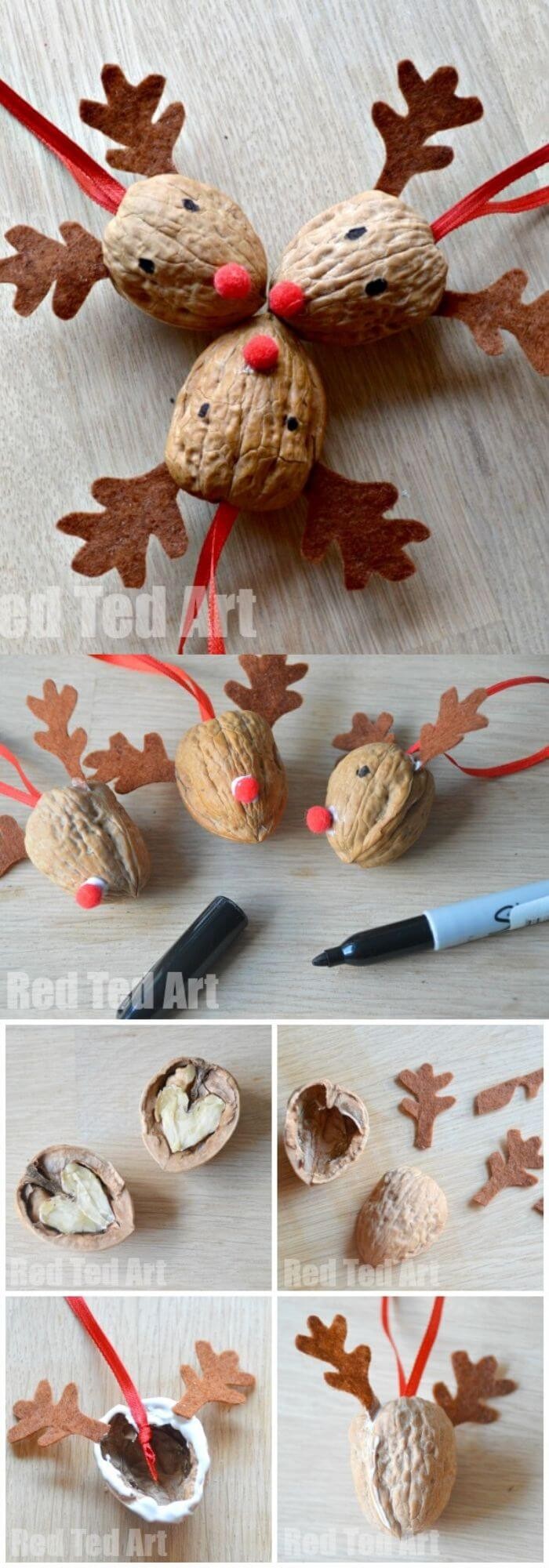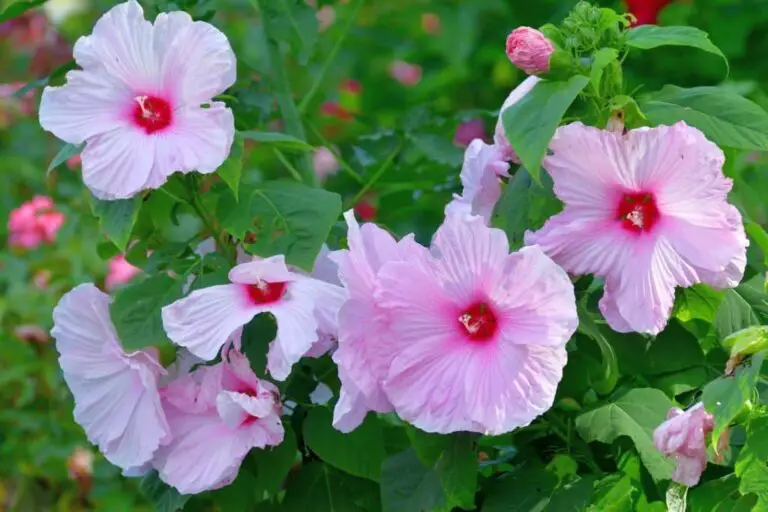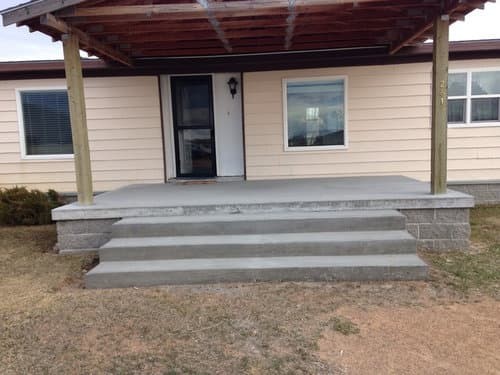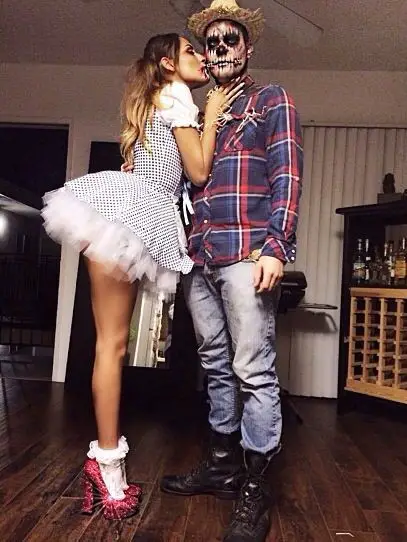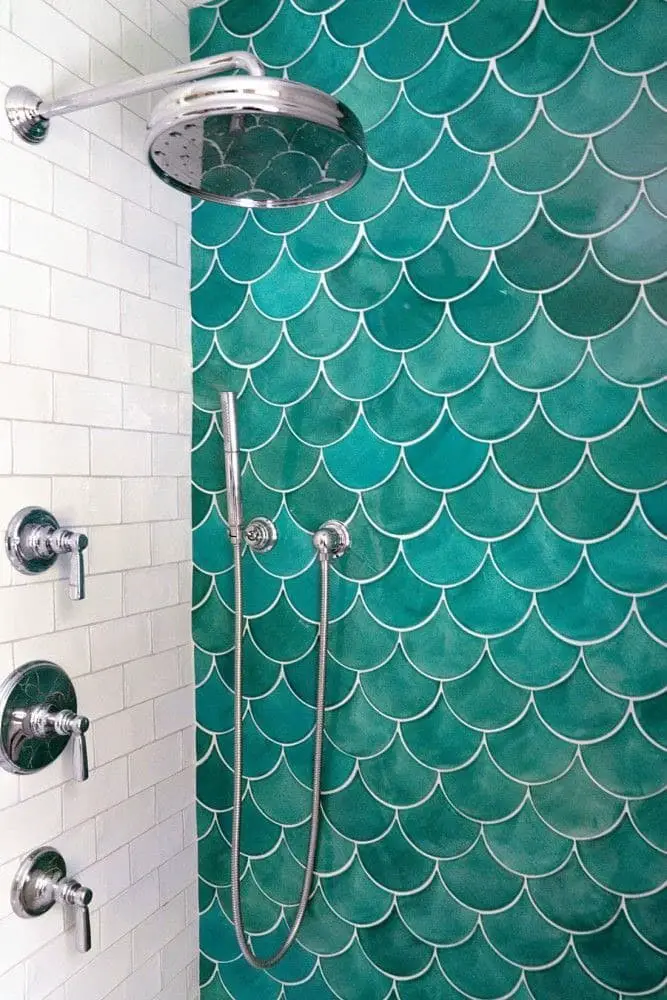What Does Your Front Door Color Mean? (12 Options)
As you stand at your front door, you’re not just entering or exiting your home – you’re making a statement about yourself. The color of your front door is more than just a aesthetic choice; it’s a reflection of your personality, style, and even emotions. In this comprehensive guide, we’ll take a deep dive into the fascinating world of front door colors, exploring their rich history, cultural significance, and psychological impact.
From the bold and passionate red to the calm and serene blue, each color holds unique symbolism and meaning that can influence how others perceive you and your home. Whether you’re looking to repaint your door, move into a new home, or simply understand the language of colors, this guide is designed to be your ultimate resource. So, let’s embark on a colorful journey and uncover the secrets behind your front door!
The Psychology of Colors
While color psychology may seem like a subjective field, researchers have uncovered some universally significant effects. The emotional impact of colors on our minds and moods is a powerful tool used in various contexts – from marketing and branding to interior design and home decor. In fact, the strategic use of color is often employed to influence human behavior and decision-making.
Relevance to Home Decor
In the realm of home decor, colors hold significant sway over the ambiance of our living spaces. The palette we select can either energize or calm the atmosphere, depending on the hues we choose. For example, warm colors like reds, oranges, and yellows can inject a sense of enthusiasm and hospitality into our homes, whereas cooler tones such as blues and greens tend to promote serenity and relaxation.
As the first point of contact with your home, the front door assumes a vital role in establishing the tone for what lies within. A brightly colored entrance can convey a lively and vibrant sense of being, while a darker or more neutral-toned door might suggest a more subdued and sophisticated interior.
Influencing Perceptions and Emotions
Each color has unique emotional connotations, influencing our feelings and perceptions. Let’s explore some specific examples:The fiery hue of red often embodies power and passion. A crimson door can hint at an energetic and dynamic household, where creativity and adventure thrive. In contrast, the soothing tone of blue represents calmness and stability. A sky-blue door may signify a peaceful, trustworthy, and reliable environment, where harmony and serenity reign.
The balanced and natural tone of green symbolizes growth, harmony, and safety. A leafy green door could be linked to a home that values community, family, and balance, fostering a sense of connection and unity. Lastly, the bright and cheerful color yellow is often associated with happiness, warmth, and positivity. A sunny yellow door might indicate a welcoming and joyful home, where laughter and memories are made.
Understanding Front Door Color Meanings
Red Front Doors
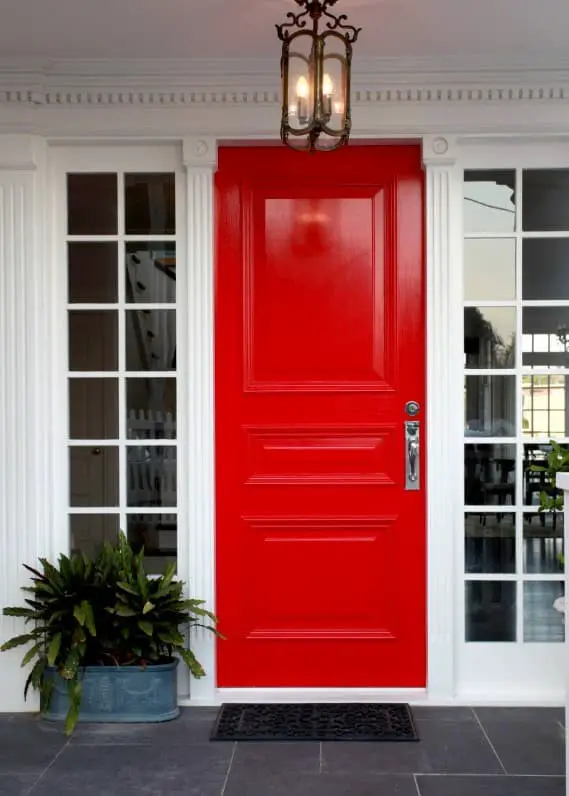
Red front doors carry significant cultural and psychological connotations. Historically, they signified safety for travelers in early American tradition, serving as safe houses on the Underground Railroad where escaped slaves could find refuge. In Chinese culture, red is associated with luck and prosperity, prompting many to paint their doors red before the Chinese New Year.
Similarly, Scottish homeowners who’ve paid off their mortgages often display a bold red door as a symbol of financial freedom.
Psychologically, red evokes power, energy, and passion. It’s a color that demands attention, making a red front door an unmistakable statement piece. This bold hue conveys confidence and strength, while also stimulating excitement and raising energy levels in those who encounter it. A red door can create the illusion of a vibrant, lively home filled with life.
However, red’s potency means it must be used judiciously to avoid overwhelming emotions like anger or frustration. When strategically applied, as on a front door, red creates a captivating and inviting entrance that draws others in.
Blue Front Doors
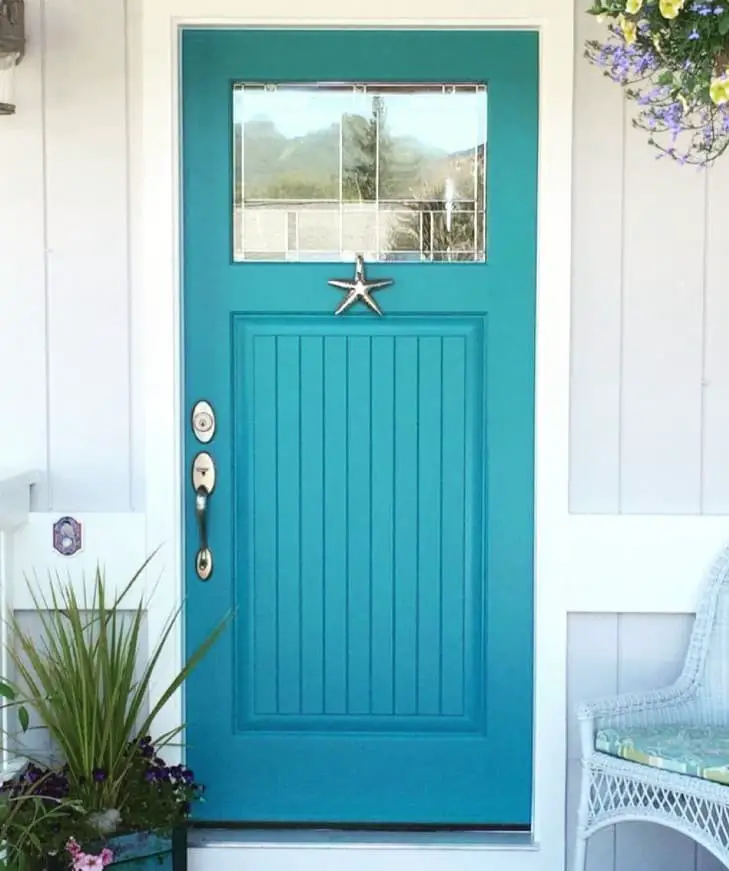
A blue front door serves as more than just a visual appeal, as it also carries profound symbolism that can influence one’s mood and perceptions. The color blue has long been linked to the sky and sea, conveying depths of stability, trust, wisdom, and serenity. In many cultures, blue is considered sacred, imbuing homes with spiritual significance.
Historically, in American colonial times, a blue front door signified that a home was a sanctuary for weary travelers, offering a safe haven during their journeys. Similarly, in Iran, blue doors are a common feature believed to ward off evil spirits and negative energies. From a psychological standpoint, the color blue has a calming effect on our minds, reducing stress and promoting relaxation.
A blue front door can thus create an atmosphere of serenity and tranquility, making one’s home appear peaceful and inviting. It may also suggest that the occupants are trustworthy, reliable, and possess a strong sense of calmness. It is crucial to note that different shades of blue can evoke varying emotions. Light blues often symbolize healing, softness, and gentleness, whereas darker blues represent knowledge, power, and integrity.
Green Front Doors
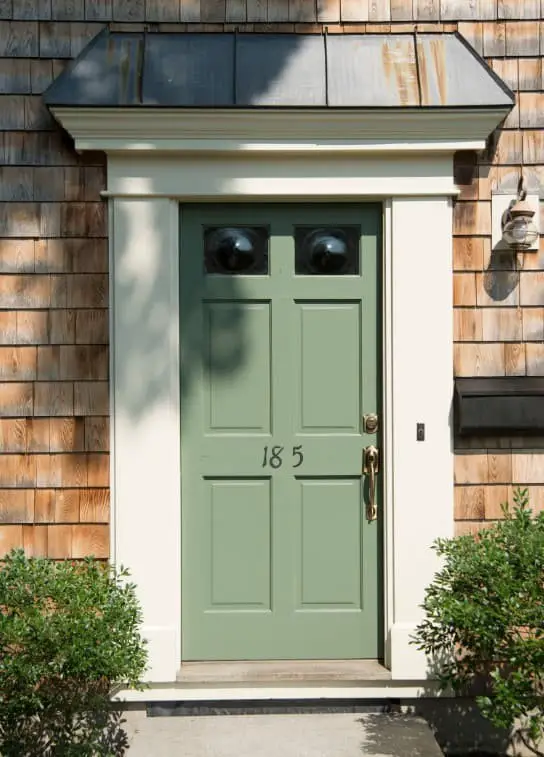
Across cultures, green front doors carry profound symbolic meanings that also influence our psychological responses. In many Eastern cultures, green represents growth, renewal, and immortality, reflecting its significance in feng shui design. The Irish associate green with hope, renewal, abundant health, fertility, and security. Meanwhile, Western societies often link it to spring, conveying freshness and new beginnings.
However, this color can also represent money, wealth, or the negative connotations of jealousy and greed. Notably, the Good Shepherd Motherhouse in Angers, France, has a green door that serves as a symbol of its apostolic ministries since the 19th century. From a psychological perspective, green is considered the most calming color for human eyes to gaze upon. It can enhance vision, stability, and endurance, suggesting a harmonious household that values peace, growth, and renewal.
The presence of a green front door may evoke feelings of tranquility and balance, creating a soothing effect on those who encounter it. Moreover, its connection to nature fosters a sense of relaxation and calmness by emphasizing the importance of being grounded in the natural world.
Black Front Doors
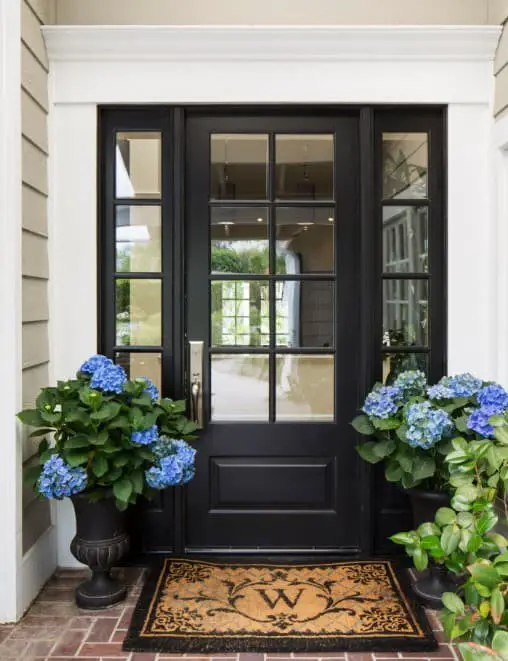
A black front door is not only a stylish statement but also a powerful symbol that can influence people’s feelings and attitudes towards your home. In Feng Shui, the color black is associated with wealth and prosperity, making it an excellent choice for those seeking to attract abundance. Symbolically, black represents power, authority, elegance, and sophistication, often shrouded in mystery and the unknown. This air of intrigue can add a level of sophistication to your home’s exterior.
However, it’s essential to note that cultural associations with black vary, and in some contexts, it may be linked to death or misfortune. Nevertheless, this doesn’t necessarily mean a black front door is bad luck; it all depends on personal beliefs and cultural backgrounds. Psychologically, a black front door makes a bold statement, evoking feelings of luxury, power, and independence.
It can give your home an air of elegance and sophistication, influencing how others perceive you and your property. Moreover, like the ‘little black dress’ that suits everyone, a black front door can complement almost any style of home, enhancing its curb appeal. Furthermore, due to black’s strong and dominant nature, it can also evoke feelings of mystery and exclusivity. This could make your home appear more private and secluded, which may be desirable if you value privacy and discretion.
Yellow Front Doors
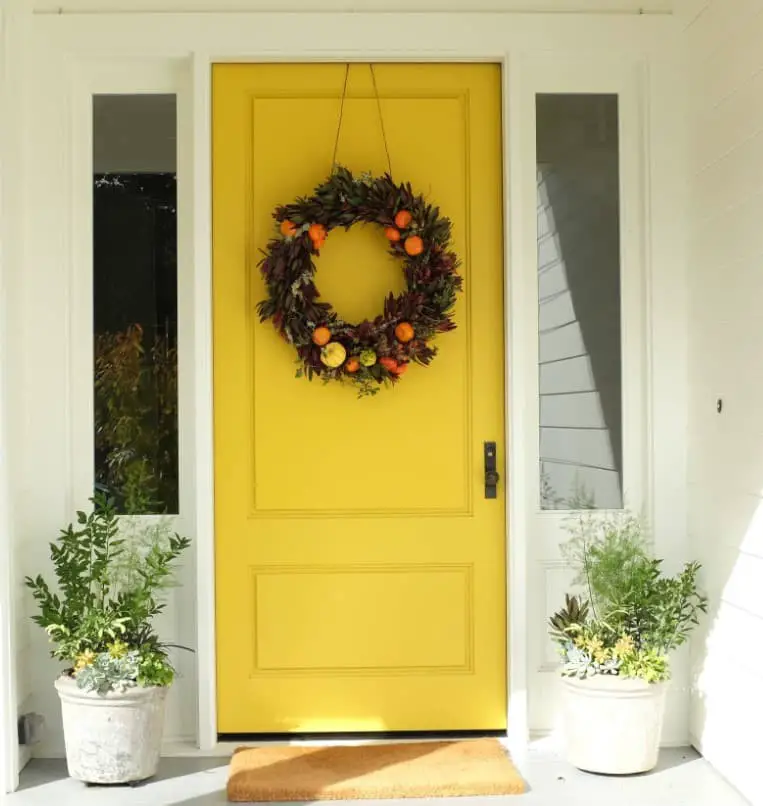
Yellow front doors have long been associated with warmth, cheerfulness, and optimism, holding significant cultural and psychological significance that can impact our mood and perceptions. The right shade of yellow, as deemed important in Feng Shui, can influence the energy flow within a home. However, it’s worth noting that historical contexts, such as 10th century France, have also linked yellow to negative connotations like criminality.
A vibrant and inviting yellow front door can create an exceptional first impression, naturally drawing attention and exuding warmth. This can shape people’s perceptions, making them view your home as friendly and welcoming. Psychologically, yellow can evoke feelings of happiness, positivity, and clarity, uplifting spirits and self-esteem while fostering optimism and confidence.
While it’s also true that excessive amounts of yellow can lead to frustration and anger, a well-designed yellow door can still brighten up your home’s exterior when contrasted against neutral or dark colors. It adds a pop of color that enhances your home’s curb appeal, making it an attractive feature.
White Front Doors
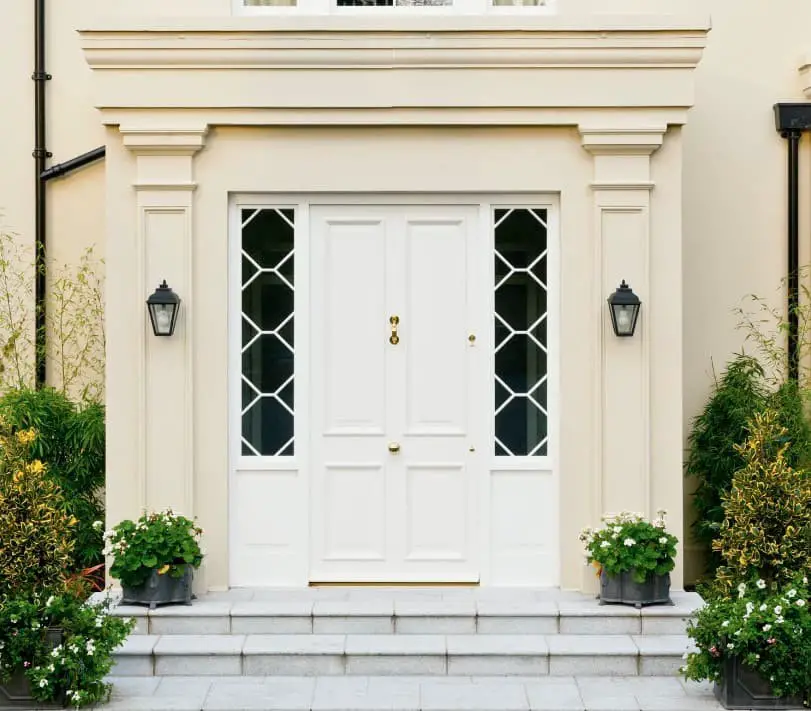
White front doors possess an enduring quality, exuding a sense of timelessness and versatility. Their symbolic significance extends beyond aesthetics, influencing our emotions and perceptions in profound ways. The cultural connotations of white doors are multifaceted. In many societies, white embodies purity, innocence, and simplicity, evoking a sense of perfection and new beginnings. This color is often linked to clarity, precision, and joy.
According to Feng Shui principles, a white door can introduce a calming energy into your home, resonating with the metal element’s associations with serenity. However, in certain cultures, white can also be associated with sterility, coldness, or even death and mourning. This dichotomy underscores the complex symbolism surrounding this color. The psychological impact of a white front door is equally nuanced.
It may evoke feelings of cleanliness, freshness, and simplicity, instilling a sense of order and tranquility in those who behold it. As a neutral choice, white can create a sense of safety, making your home appear spacious, calm, and serene. Yet, its reflective properties may also produce an intense brightness that can be overwhelming for some individuals. From a design perspective, a white front door offers a clean and crisp aesthetic that harmonizes with various architectural styles.
Its versatility allows it to effortlessly match any exterior color scheme, thereby enhancing your home’s curb appeal.
Purple Front Doors
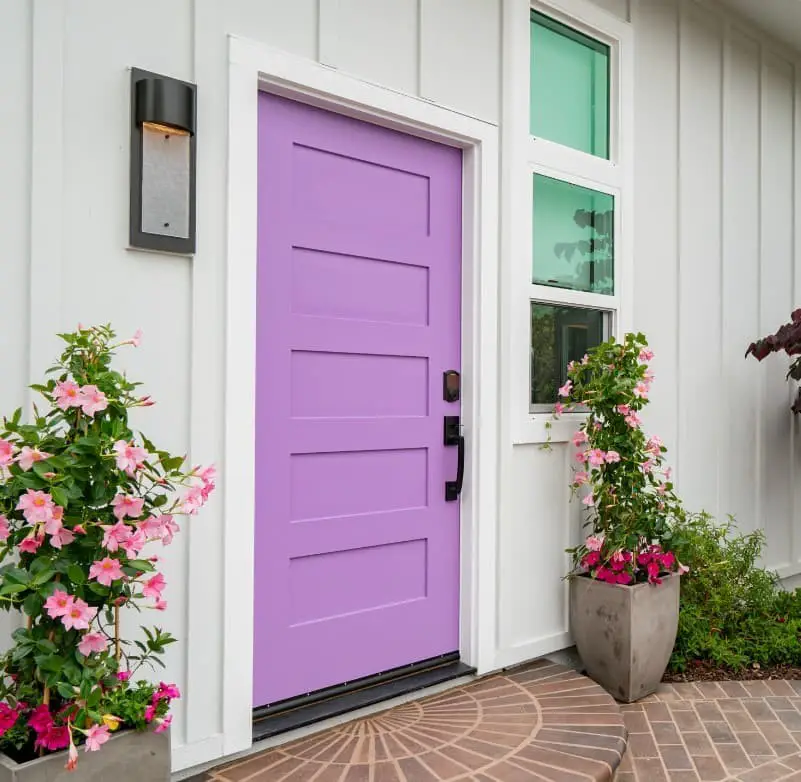
Purple front doors are a bold statement piece that embodies rich symbolism and psychological undertones. The significance of the color purple is rooted in its historical association with royalty, power, and wealth. In ancient times, only the wealthy or royal class could afford the expensive dye. This legacy continues to influence our perceptions, as purple is often linked to luxury and prestige.
In Feng Shui philosophy, purple is a high-vibration color believed to inspire spiritual growth and healing. Conversely, in some cultures, it symbolizes mourning or death. This dichotomy highlights the complexity of symbolism surrounding purple doors. The psychological impact of a purple front door is equally intriguing. Research suggests that purple stimulates problem-solving areas in the brain, fostering creativity, intuition, and artistic ability.
A purple door can create a lasting impression on guests due to its uncommon nature, imparting a regal, mysterious, and creative aura that may influence perceptions of the homeowner. From a design perspective, a purple front door injects individuality and pops of color into an exterior palette, particularly when contrasted with neutral hues. This bold choice can add depth and character to a home’s facade, making it a thought-provoking addition to any architectural landscape.
Pink Front Doors
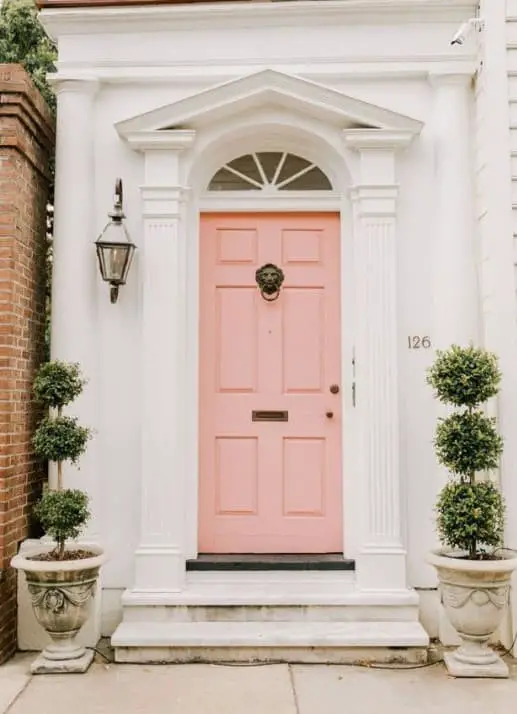
In recent times, pink front doors have captured attention worldwide, sparking discussions about self-expression, design trends, and community regulations. The significance of this color choice extends beyond aesthetics, as pink is often linked to emotions like love, compassion, and nurturing. In the realm of Feng Shui, pink represents romance and partnership. Interestingly, recent events have highlighted both the positive and negative reactions to pink front doors.
On one hand, a postal worker’s compliment on a pink door in Detroit went viral, showcasing the power of small acts of kindness. On the other hand, Edinburgh resident Miranda Dickson faced multiple investigations after her bright pink door sparked controversy among local authorities. Initially, she was ordered to repaint it green to preserve the character of Edinburgh’s New Town district, a UNESCO World Heritage site.
However, even after repainting it, she continued to receive complaints, underscoring the complexity surrounding this seemingly innocuous design choice.
Orange Front Doors
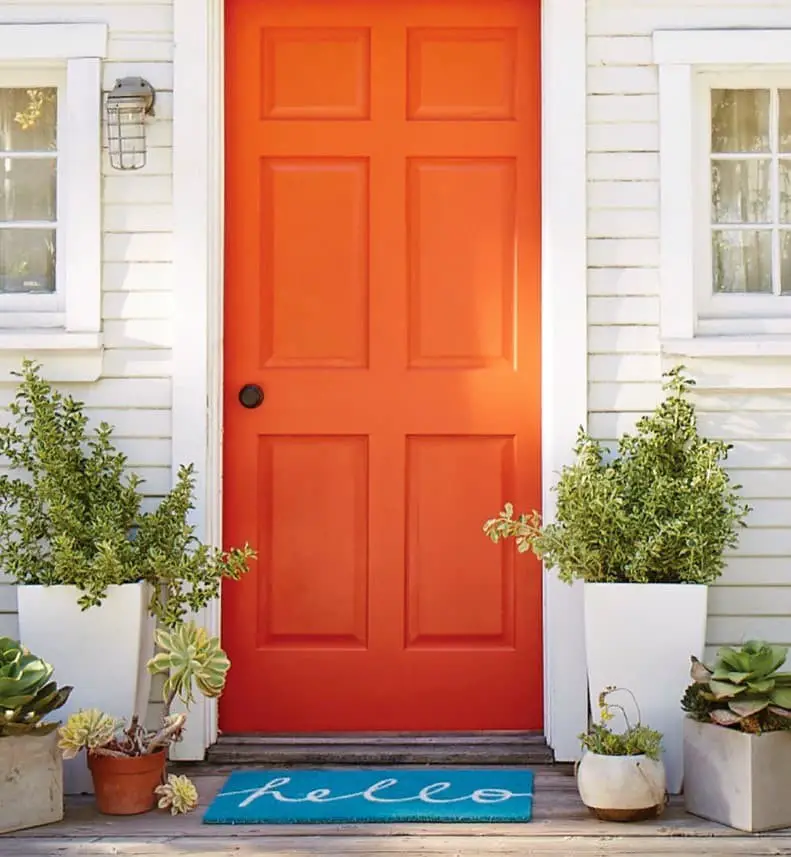
Orange front doors are a bold and playful choice that can add a pop of personality to your home’s exterior. This vibrant color is not for the faint-hearted, but it can bring a unique charm and energy to your home. The symbolism behind orange doors is rooted in its association with joy, warmth, and enthusiasm. In Feng Shui, orange falls under the fire element, promoting lively conversations and good times.
It’s an excellent choice for social spaces where you want to foster connection and community. Psychologically, orange is a color that lifts our spirits and rejuvenates our mood. It’s uplifting and optimistic, making it an excellent choice for any space where you want to promote positivity. From a design perspective, an orange front door can create a dramatic entrance that draws attention and sets the tone for your home.
When considering an orange front door, think carefully about the shade you choose. A bright, neon orange might be overwhelming on a traditional-style home or in a neighborhood with more subdued colors. On the other hand, a darker, burnt orange could be a perfect fit for a modern or contemporary design. As always, it’s recommended to test the color on a small portion of your door first and observe it at different times of day and in different lighting conditions before making your final decision.
Brown Front Doors
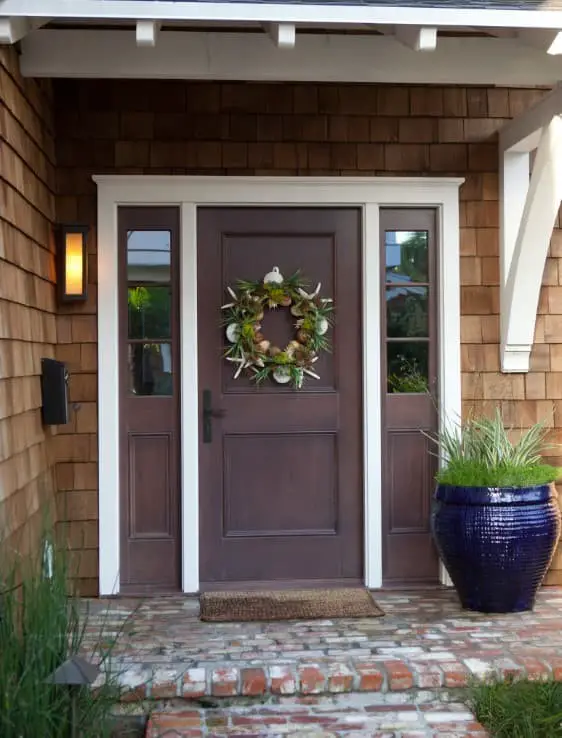
A brown front door is a timeless choice that can effortlessly bring warmth and hospitality to the entrance of your home. The symbolism surrounding this color is rooted in its connection to stability, reliability, dependability, and approachability – qualities reminiscent of the earthy tone itself. In Feng Shui philosophy, brown is classified as an earth color, believed to imbue a sense of stability and nourishment.
This notion carries over into our emotional response to the color, where it evokes feelings of comfort, security, and warmth. A brown front door can make even the largest of homes feel cozier and more inviting. From a design perspective, this warm hue complements an array of exterior colors, including beige, stone, taupe, gray, and white. Its versatility also makes it a natural fit for homes featuring natural wood or stone elements, or those nestled among lush vegetation.
When selecting the perfect shade of brown for your front door, consider the existing aesthetic of your home’s exterior. Darker browns can add depth and richness, while lighter, tawny browns create a softer, more relaxed ambiance. As always, it’s essential to test the color on a small section of your door first, observing its appearance at different times of day and under various lighting conditions before making your final decision.
Grey Front Doors
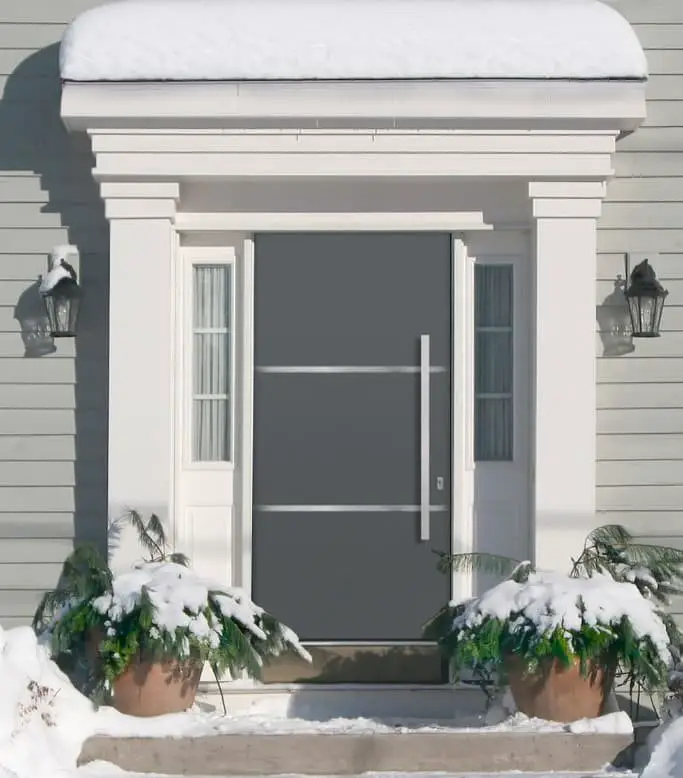
Grey front doors offer a harmonious blend of sophistication and versatility, effortlessly complementing various architectural styles and exterior hues. The symbolism surrounding grey is rooted in its neutrality, balance, and elegance, reflecting compromise between opposing forces. In Feng Shui, grey embodies the metal element, bringing clarity, precision, sophistication, and refinement.
This calming color exudes intellectual, wise, and knowledgeable vibes, yet can also be perceived as lacking energy due to its association with neutrality. Design-wise, a grey front door harmonizes with most color schemes, providing subtle contrast against white or cream exteriors or blending seamlessly with blue, green, or brick red homes.
When selecting a shade of grey, consider the exterior’s overall aesthetic and test the color on a small area first, observing its impact at different times of day and under various lighting conditions before making your final decision.
Teal Front Doors
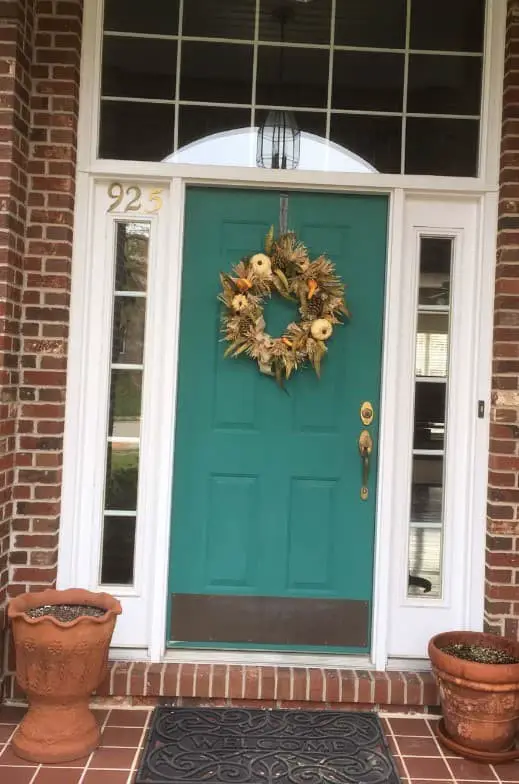
Teal front doors offer an unparalleled combination of sophistication and vibrancy, setting homes apart from the ordinary. The symbolism surrounding this color is equally captivating, as it’s often linked to tranquility, creativity, and healing. By balancing the soothing qualities of blue with the invigorating energy of green, teal embodies a harmonious blend that can positively impact one’s mental clarity and emotional balance.
In Feng Shui, teal is perceived as a fusion of the wood element (green) and the water element (blue). The wood element is associated with growth and vitality, while the water element is linked to wisdom and serenity. This synergy can bring a sense of calmness and serenity to the exterior of your home. A teal front door also exerts a profound psychological impact, promoting mental clarity and emotional balance.
It’s often employed in spaces designed for relaxation and introspection, making it an excellent choice for a calming entryway. From a design perspective, a teal front door can add a pop of color to an otherwise neutral exterior, pairing well with white, grey, beige, or even brick exteriors. This vibrant hue can also imbue your home with a touch of coastal charm. When selecting a shade of teal for your front door, it’s essential to consider the other elements of your home’s exterior.
A brighter, more turquoise teal might be ideal for a beach house, while a darker, more muted teal could be more suitable for a traditional-style home. Ultimately, the right shade will depend on your personal taste and the overall aesthetic you wish to achieve.
Choosing the Right Front Door Color
When it comes to designing the exterior of your home, the color you choose for your front door is a crucial decision. This welcoming entrance often serves as the first impression people have of your property, making its hue a vital component in creating a lasting impression. As such, it’s essential to consider several key factors when selecting a color that harmonizes with your home’s exterior.
Some things to keep in mind include the style and architecture of your house, the surrounding neighborhood or landscape, and the overall aesthetic you wish to achieve.
Factors to Consider
When it comes to choosing a color for your front door, there are several factors to consider. The architectural style of your home can serve as a guide, as a bright yellow door might be perfect for a modern minimalist abode but may not mesh well with a traditional Victorian-style residence. Additionally, the exterior color palette of your home should also play a role in your decision-making process, as you’ll want to ensure that your front door complements the siding, roofing, and trim colors.
Your personal preference is also an important consideration – whether you’re drawn to bold and bright or more subdued hues, choose a color that brings you joy. If you live in a neighborhood with a homeowners association (HOA), be sure to check their guidelines regarding front door colors before making your final decision.
Finally, don’t forget to consider the symbolic meaning behind different colors – do you want your front door to reflect your fun and playful personality or perhaps convey a sense of sophistication and elegance?
Tips for Matching Front Door Color
When it comes to selecting a new front door color, there are several factors to consider. First, understanding the basics of color theory is essential. This means thinking about how colors interact with each other, particularly when it comes to complementary colors that can create a visually appealing contrast. For instance, choosing a color that is opposite another on the color wheel can lead to a vibrant and striking combination.
Before making a final decision, test out your chosen color by painting a small section of the door. Observe how it looks at different times of day and under varying lighting conditions. This will help you determine if your initial choice still seems appealing after considering the nuances of light and shadow. The materials used in your home’s construction can also play a significant role in determining the best color for your front door.
For example, a wooden door might be well-suited to a stain that highlights its natural grain, while a metal door could benefit from a bold, glossy paint job. In addition to these considerations, there are many online tools and apps available that allow you to virtually paint your front door and see how different colors will look. This can be a useful way to explore different options without committing to a specific color just yet.
If you’re still unsure about which direction to take, consider consulting with a professional designer or color consultant. They have the expertise and knowledge to provide personalized advice based on your home’s unique style, lighting, and surroundings.
Frequently Asked Questions About Front Door Colors
The color of a front door can be a thought-provoking aspect of a home’s exterior, with various meanings stemming from cultural, psychological, and personal interpretations. While some believe certain colors attract specific types of energy or symbolize aspects of the interior, others see it as a mere aesthetic choice. Choosing a front door color depends on several factors, including the home’s exterior color, surrounding landscape, personal preference, and any homeowner association rules.
Psychological impacts of colors should also be considered. In terms of cohesion, some homeowners prefer matching colors for doors, shutters, and trim, while others opt for contrasting hues to make their front door stand out. Ultimately, it comes down to personal taste and overall aesthetic goals. A well-chosen front door color can enhance curb appeal, which may contribute to a higher perceived value of the home. However, the impact on actual selling price varies based on many other factors.
Brightly colored front doors can add personality and charm to a home, but it’s essential to ensure the color complements the rest of the exterior and fits within any guidelines set by the homeowner’s association. Painting a front door oneself is possible with the right tools and patience, using high-quality exterior paint for the best results. Repainting may be necessary every 5-7 years, depending on the quality of the paint used, color chosen, and exposure to the elements.
The inside and outside of the front door do not necessarily need to match, allowing homeowners to express their personal style through different colors.
Conclusion
When selecting the perfect hue for your front door, you’re not only defining the first impression of your home but also setting the tone for its overall aesthetic. We’ve delved into the significance and curb appeal-enhancing potential of two distinct colors: grey and teal. Grey, with its connotations of balance and sophistication, offers a versatile choice that harmonizes with various architectural styles and exterior color palettes.
In contrast, teal’s blend of blue’s serenity and green’s vibrancy adds a unique pop of color that can make your home stand out from the crowd. Remember, the right front door color also depends on factors like your home’s exterior hue, surrounding landscape, personal preference, and any applicable homeowner association regulations. Whether you opt for a calming grey, a vibrant teal, or another color altogether, don’t be afraid to let your personality shine through.
Ultimately, your front door’s color should reflect the unique character of your abode and serve as an opportunity to make a statement – choose a hue that brings you joy and makes every return home a welcoming experience.
Related Posts
When it comes to enhancing the curb appeal of your home, one crucial aspect is often overlooked – the color of your garage door. A harmonious pairing with your house’s exterior can make all the difference. In this article, we’ll explore some perfect pairings for a yellow house, as well as provide some inspiration for green houses and gray furniture.
We’ll also delve into the world of ceiling colors, bedding, and sliding glass doors to ensure that every aspect of your home is a reflection of your unique style.

